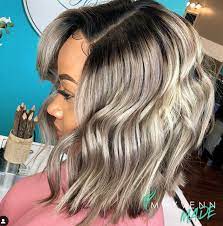
Introduction
As soon as it comes to hair dyes, one important fact is that certain ingredients may cause itchy scalp symptoms – these tend to include irritants and allergens. The FDA allows hair dyes with various concentrations of chemicals to be sold, with professional hairdressers and barbers potentially experiencing greater exposure than the general population due to their workplace environments.
Manufacturing
At present, hair dye production follows a two-stage process. Manufacturers combine certain basic components in order to produce so-called color precursors; then a Frisor can oxidize these precursors in certain ways in order to produce multiple colors suitable for customer application on head hair. At a manufacturing plant, workers carefully measure ingredients for each batch of hair dye before using computers to monitor chemical reactions and equipment. Over time, production will become fully automated. As a precaution against allergic reactions, certain chemicals used in the production of hair dye are tested on human skin samples before production begins. pH balance and viscosity (resistance to flow) of final products samples may also be tested; manufacturers can perform such tests in-house or hire an outside laboratory company to conduct them.
Testing
Before producing any batch of hair dye, manufacturers conduct extensive quality control testing of its ingredients. This testing may include verifying that each chemical has the appropriate labeling and strength requirements; testing may either be performed internally by the company itself or externally by an independent lab that specializes in such tests. Reputable hair dye manufacturers conduct numerous laboratory trials on each formula they produce before proceeding with production. This ensures it is safe, non-irritating and produces consistent color results every time. To perform your own strand test, separate a thicker strand of hair and dye it exactly as instructed by the manufacturer. You can also experiment with mixing colors or applying heat application at various time periods or periods to get more accurate results. No matter how you conduct your test, it is vitally important that any allergies or negative reactions be reported immediately to both your physician and manufacturer so FDA can monitor consumer complaints about cosmetic products available for sale.
Labeling
hair dye products contain an ingredient known as p-Phenylenediamine that has been linked to severe eye and skin irritation, bladder cancer risk studies and is listed by WHO as a carcinogen. Unfortunately, however, FDA cannot take action against manufacturers who use it without either consumer complaint or evidence that there has been severe allergic reactions due to using it. Images used on hair dye packaging must be accurate in tone and color, free from printing variations that occur during production runs, and free from confusing differences across production runs that cause customers to abandon purchasing certain items on store shelves. Otherwise, customers could become disoriented or even make unwise purchasing decisions that might negatively impact sales of that product altogether. Manufacturers must also clearly label the ingredients found in a hair dye kit, including its developer volume percentage. This information is key in helping achieve desired results for each specific shade of hair color.

